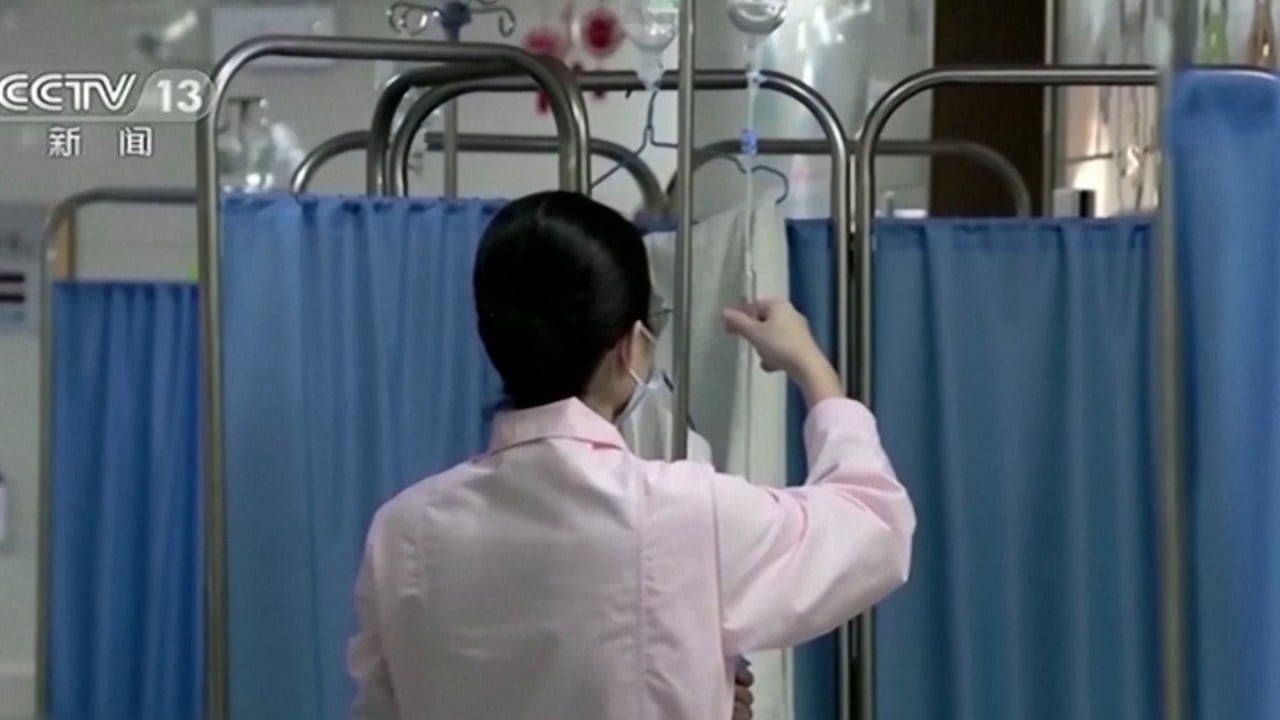
China health authorities say respiratory illnesses spike is finally easing
- Latest monitoring results show the numbers of people, mostly children, needing treatment nationally is on a downward trend
- National Health Commission also reports increased medical capacity has ‘effectively met’ patients’ healthcare needs
Speaking at a live-streamed press conference, Mi said the country had “effectively met” patients’ healthcare needs, with expanded medical resources, including more hospital beds and increased capacity at outpatient and emergency department clinics.
Monitoring results showed that at grass roots levels, fever clinics and outpatient departments accounted for around 44 per cent of the nationwide medical institutions’ reception volume, he said.
China has been grappling with a surge in acute respiratory illnesses caused by various pathogens since October, with children among the worst hit. Chinese media has reported long queues at outpatient and inpatient paediatric clinics across the country.
Respiratory disease surge driven by range of pathogens, China says
The clusters of cases among children in China’s northern regions, along with reports of overburdened healthcare systems, prompted the WHO to ask Beijing for more information in November.
Chinese health authorities advised the WHO last month that various known pathogens were responsible for the spike, including the influenza virus, rhinoviruses, mycoplasma pneumonias, respiratory syncytial virus (RSV) and adenovirus.
At the NHC press conference on Sunday, Chang Zhaorui from the Chinese Centre for Disease Control and Prevention (China CDC) said the public health risk posed by the Covid-19 variant JN. 1 – a sub-lineage of BA. 2.86 – is “relatively low”.
The highly mutated BA. 2.86 was upgraded in November to a variant of interest by the WHO, which said it has been reported in multiple countries.
In its November report, the WHO said the public health risk posed by BA. 2.86 globally is low and unlikely to burden to national public health systems.
Chang, a research fellow with China CDC, said experts had assessed the proportion of BA. 2.86 variant sequences as at a “low” epidemic level. BA2.86 cases from imported cases had been increasing rapidly since November, aligning with global trends, he said.
According to Chang, 160 cases involving BA. 2.86 and its sub-lineage were reported nationwide, with 148 arriving from outside China and 12 sequences identified as domestic in origin.
Based on monitoring results of China’s respiratory pathogens, there have been no severe or critical cases caused by the variant in China and no unknown viruses or bacteria have been discovered, he said.


